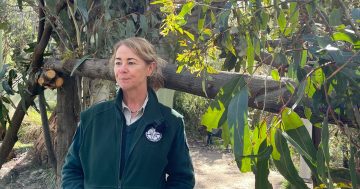
Dr Sarah May and pilot Michael Smith with two very important brush-tailed rock-wallabies at Canberra Airport on Thursday, 4 March. Photo: Canberra Airport.
A repatriation flight of a very different kind to that of returned overseas travellers touched down at Canberra Airport on Thursday, 4 March, with two passengers on a mission to save the ACT’s future population of brush-tailed rock-wallabies.
Described as ‘bouncing popcorn’, the male and female rock-wallabies from the Sydney region will have a 60-day stay in ‘hotel quarantine’ before their real mission to populate or perish begins.
The very important passengers arrived in a private four-seat amphibious aircraft owned and piloted by adventurer Michael Smith, who was able to heed the call of the critically endangered macropods.
ACT Parks and Conservation Service’s wildlife team leader Dr Sarah May has been given the task to recharge the population in the ACT that has been decimated by bushfires and predation by foxes.

An ACT Parks and Conservation Service member releases one of the brush-tailed rock-wallabies into quarantine. Photo: ACT Environment, Planning and Sustainable Development Directorate.
Dr May said there were less than 40 brush-tailed rock-wallabies in the wild in the ACT and the East Gippsland region of Victoria. The last known sighting of a wild brush-tailed rock-wallaby in the ACT was in 1959.
“These two animals will be contributing a bit of genetic spice into the breeding program we have here,” she said.
“This is about putting some fat on the rock-wallabies’ genome so they have a bigger reservoir to draw upon when times get hard with changing climate conditions. Basically we want to make sure they’ve got more reserves up their sleeves.”
In 2018, the brush-tailed rock-wallaby became the ACT mammal emblem as Tidbinbilla is the only place in the ACT where it can be found. The breeding program is within a 120-hectare, predator-free exclosure, called Jedbinbilla, at Tidbinbilla Nature Reserve, that will sustain up to 200 rock-wallabies.
When the Orroral Valley bushfire took hold in January 2020, 26 wallabies were evacuated to Mount Rothwell in Victoria to help preserve the breeding program.
“The fires all through NSW and Victoria really hammered the rock-wallabies’ habitat, and there were a lot of rescue operations going on,” said Dr May. “The population in East Gippsland was only saved by a very narrow valley that didn’t burn.
“That area was a stronghold of this tiny, remnant population and we’re still amazed it was spared and the animals survived with a bit of support.”

Veterinarian Dr Arianne Lowe does a health check on one of the brush-tailed rock-wallabies after its arrival in Canberra. Photo: ACT Environment, Planning and Sustainable Development Directorate.
The Tidbinbilla population is also seen as critical and requires intensive management before the brush-tailed rock-wallabies can be released into the wild again.
“This process we’ve undertaken to find two breeding animals and establish them here is critical so we can establish an insurance population so we don’t have all of our wallabies in one basket,” said Dr May.
“It’s intensive as we don’t want our remaining population to perish. We want to see the day where we no longer need to be their guardians – that’s when we’ll know we’ve achieved something.”
As macropods – a suborder of marsupials including kangaroos, bettongs and potoroos – brush-tailed rock-wallabies are good breeders given the right conditions. Following excellent rainfall, those conditions are again flourishing so the timing of getting two breeding rock-wallabies from another area is crucial to ensure the diversity of the current population.
Even tasking the private aircraft from trailblazing aviator and animal lover Michael Smith relied on the most effective way of getting the animals to their new home as soon as possible.

Pilot Michael Smith and his amphibious aircraft with Dr Sarah May and the special cargo. Photo: Canberra Airport.
“With the loss of animals in the wild, there has been a corresponding loss of genetic diversity so there’s now a very narrow gene pool,” said Dr May. “We really need to reinvigorate their genome so the two animals we have introduced have been identified as the best to benefit our breeding program.
“These two animals are a critical part of our breeding program.”
Let the fun begin.
















